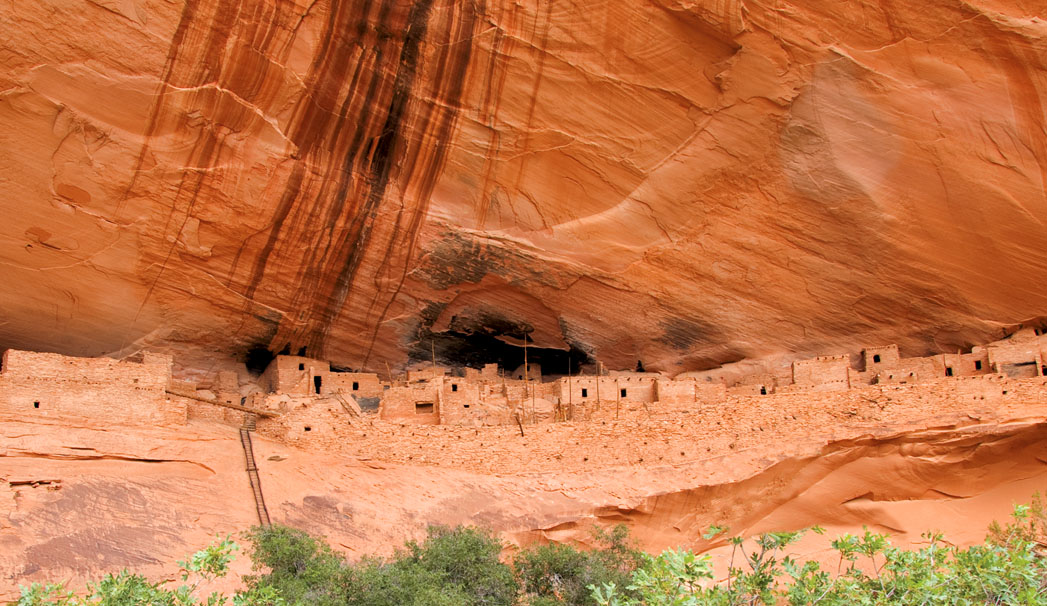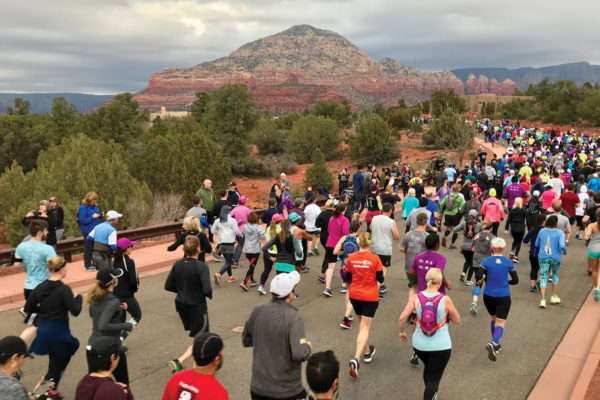Navajo National Monument, located just south of Monument Valley, encompasses three cliff dwellings. Two of those dwellings are open to visitors. both are amazing destinations, but only one is truly worth the effort. Read on for a brutally honest account of our exploration.
Betatakin/Talastima
For 30 years, the incredibly steep Aspen Trail that winds its way to the bottom of the Tsegi Canyon system and Betatakin/Talastima ruin was closed. By complete coincidence, during our visit, we became only the second group to hike down this trail since it reopened, which made us feel pretty special. The Aspen Trail is much steeper – and much shorter – than the trail on the other side of the canyon that guides had been using while Aspen was off limits, so be prepared to climb what will seem like an infinite number of stone steps over the two-mile round-trip hike.
From Memorial Day weekend through Labor Day weekend, rangers with Navajo National Monument lead free hikes to Betatakin/Talastima at 8:15 and 10 a.m. daily. During the rest of the year, rangers hike into the canyon at 10 a.m. on weekends only, and that’s if staff is available, so we highly encourage you to call in advance. Only 15 people are allowed to visit Betatakin/Talastima each day.
We met our ranger at the Navajo National Monument Visitors Center at 10 a.m., and she briefed us on the history of the area. Then we dropped 700 feet down countless switchbacks and stairs into the red rocks of Tsegi and Betatakin canyons. An aspen, fir and spruce forest still thrives at the bottom of Betatakin Canyon, remnants of the last ice age 12,000 years ago. Along the trail, we could see the top of the alcove that protects Betatakin/Talastima like it’s a precious family heirloom, but we didn’t see the cliff dwelling itself until we were practically right in front of it. (The alcove is truly enormous, measuring 452 feet high and 370 feet across.) Feeling like archaeologists in an Indiana Jones adventure, we hiked past the canyon’s lone composting toilet when suddenly the trees parted, and we were gazing upon a village that was built between 1267 and 1286.
Our guide led the group past a natural spring and up into the shaded alcove via footholds in the rock, and our group settled into one of the main living areas of Betatakin/Talastima (Betatakin translates to “house built on a ledge” in Navajo). Today, due to rockslides (which occur often enough that our ranger warned us of the risk, adding to the day’s sense of adventure), the dwelling has been reduced to 135 rooms. At the time of our visit, we had yet to backpack to Keet Seel/Kawestima, but instantly we felt like Betatakin/Talastima was the best-preserved ruin we’d experienced in the U.S. outside of Mesa Verde National Park in Colorado. We gazed in fascination at the ladders that still lead to upper rooms, and we became even more excited when we learned that these were the same ladders the Ancestral Puebloans used hundreds of years ago (only the ties that hold the wood together have been replaced). Though the roofs of the structures were long gone, the walls, doors and windows were still intact. We saw evidence of ancient cooking fires and grinding stones. The sounds of birds echoed in the alcove.
After about an hour of listening to the history of the area and its people, the ranger led us along another short trail to view some pictographs before allowing us to hike back to our cars on our own. We reached the visitors center breathless but inspired by what we’d seen. It was a four-hour round trip to the ruins and back, and it was worth every amount of effort.
Permits: A permit is not needed to hike Betatakin/Talastima; however, it’s a good idea to call a few days in advance and put your name on a list for the day you want to hike. From Memorial Day through Labor Day, two tours are offered daily. The 8:15 a.m. tour has a maximum of 25 people while the 10 a.m. tour has a maximum of 15 people. From mid-March through Memorial Day weekend and mid-September through mid-November, tours are offered on weekends only and are based on staff availability and weather. The tours are free. For more info, call 928-672-2700 or visit www.nps.gov/nava.




